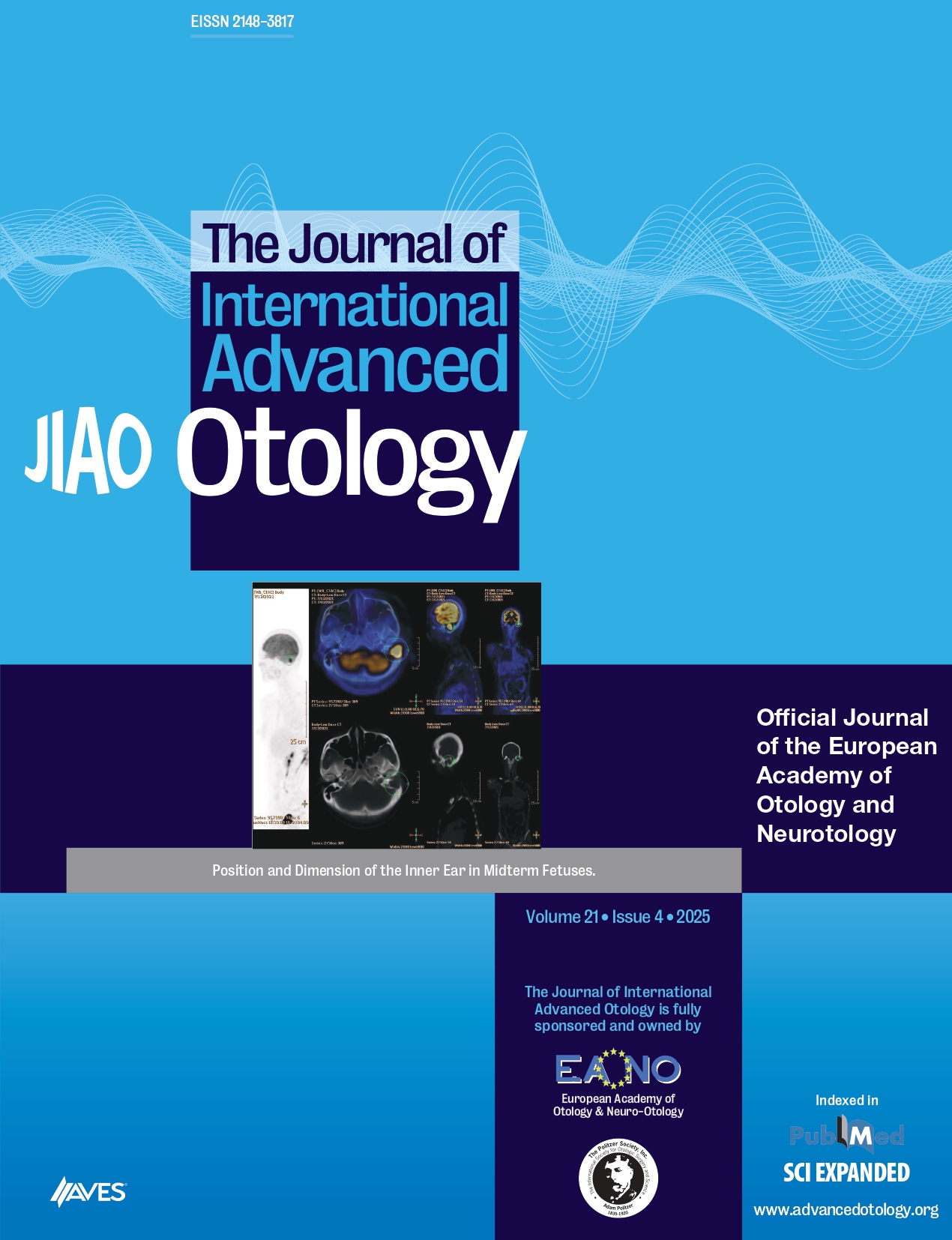BACKGROUND: It is ascertained that the compressed high-intensity radar pulse (CHIRP) is an effective stimulus in auditory electrophysiology. This study aims to investigate whether Narrow Band Level Specific Claus Elberling Compressed High-Intensity Radar Pulse (NB LS CE-CHIRP) stimulus is an effective stimulus in the vestibular evoked myogenic potentials test.
METHODS: A case-control study was designed. Fifty-four healthy participants with no vertigo complaints and 50 patients diagnosed with acute peripheral vestibular pathology were enrolled in this study. Cervical and ocular vestibular evoked myogenic potential tests (cervical vestibular evoked myogenic potentials and ocular vestibular evoked myogenic potentials) with 500 Hz tone burst and 500 Hz Narrow Band Level Specific CE-CHIRP stimulations were performed on all participants. In addition, cervical vestibular evoked myogenic potentials and ocular vestibular evoked myogenic potentials tests with 1000 Hz tone burst and 1000 Hz Narrow Band Level Specific CE-CHIRP were performed on 24 Meniere’s disease patients. P1 latency, N1 latency, amplitude, threshold, and the asymmetry ratio of responses were recorded.
RESULTS: In healthy participants, with CHIRP stimulus, shorter P1 latency (P < .001), shorter N1 latency (P < .001), and lower threshold (P = .003) were obtained in the cervical vestibular evoked myogenic potentials test; shorter P1 latency (P < .001), shorter N1 latency (P < .001), higher amplitude (P < .001), and lower threshold (P < .001) were obtained in ocular vestibular evoked myogenic potentials test. In symptomatic ears of patients, with CHIRP stimulus, shorter P1 latency (P < .001), shorter N1 latency (P < .001), and lower threshold (P=.013 in cervical vestibular evoked myogenic potentials; P=.015 in ocular vestibular evoked myogenic potentials) were obtained in cervical vestibular evoked myogenic potentials and ocular vestibular evoked myogenic potentials tests. In asymptomatic ears of patients, with CHIRP stimulus, shorter P1 latency (P < .001) and shorter N1 latency (P < .001) were obtained in the cervical vestibular evoked myogenic potentials test; shorter P1 latency (P < .001), shorter N1 latency (P < .001), higher amplitude (P < .001), and lower threshold (P=.006) were obtained in ocular vestibular evoked myogenic potentials test.
CONCLUSION: Our results suggest that due to higher response rates, shorter latencies, higher amplitude, and lower threshold values, the Narrow Band Level Specific CE-CHIRP stimulus is an effective stimulus for both cervical vestibular evoked myogenic potentials and ocular vestibular evoked myogenic potentials tests.
Cite this article as: Aydın BD, Erbek HS. Comparison of compressed high-intensity radar pulse and tone burst stimulation in vestibular evoked myogenic potentials in acute peripheral vestibular system pathologies. J Int Adv Otol. 2023;19(2):130-139.



.png)
.png)